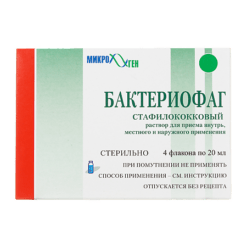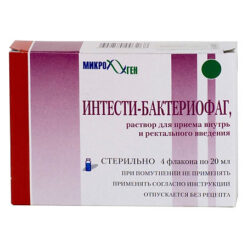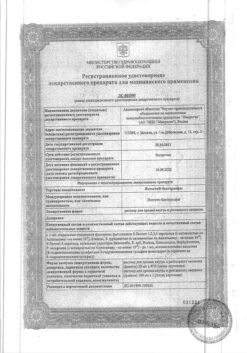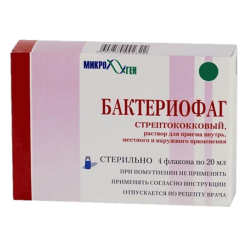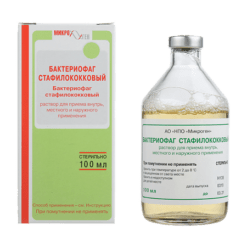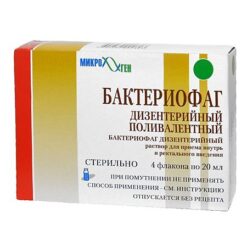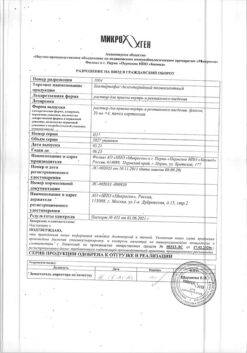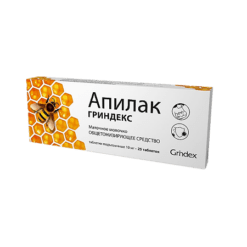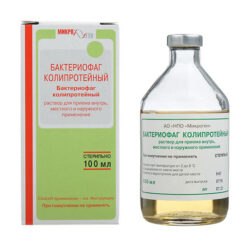No products in the cart.
Plegridy 125 µg 0.5 ml syringe, 2 pcs.
€1.00
Out of stock
(E-mail when Stock is available)
Description
The active ingredient of Plegridi is a conjugate of interferon beta-1a, which is genetically engineered from Chinese hamster ovary cells, and one linear molecule of methoxypolyethylene glycol-O-2-methylpropionaldehyde (mPEG) with a molecular weight of 20 kDa, in the ratio, 1 mole protein/1 mole polymer. The average molecular weight of the conjugate is about 44 kDa, of which the protein is about 23 kDa. It does not contain any preservatives.
The activity of this drug should not be compared to that of other pagylated or non-pagylated proteins of the same therapeutic class.
The mechanism of action
The exact mechanism of action of peginterferon beta-1a in multiple sclerosis is unknown. Plegridi binds to type I interferon receptors on the cell surface and triggers a cascade of intracellular reactions leading to regulation of interferon-dependent gene expression. Biological effects possibly mediated by Plegridi include enhanced expression of anti-inflammatory cytokines (e.g., interleukin-4 (IL-4), IL-10, IL-27), reduced expression of proinflammatory cytokines (e.g., IL-2, IL-12, interferon-γ, tumor necrosis factor α – TNF-α) and suppression of activated T-cell migration across the blood-brain barrier; however, additional mechanisms may be involved. Since the pathophysiology of multiple sclerosis is only partially elucidated, the exact mechanism of action of Plegridi is unknown.
Pharmacodynamic Effects.
Plegridi is an interferon beta-1a conjugated by the N-terminal amino acid residue of the alpha-amino group with one linear molecule of methoxypolyethylene glycol (20 kDa).
Interferons are a family of naturally occurring proteins induced by cells in response to biological and chemical stimuli. Interferons mediate numerous cellular reactions classified as antiviral, antiproliferative, immunomodulatory. The pharmacological properties of Plegridi are consistent with the properties of interferon beta-1a and are thought to be mediated by the protein part of this molecule.
Pharmacodynamic responses to Plegridi administration were assessed by measuring the induction of interferon-dependent genes, including genes encoding 2′,5′-oligoadenylate synthetase (2′,5′-OAS), myxovirus resistance protein A (MxA), and several chemokines and cytokines, as well as neopterin (D-erythro-1,2,3-trihydroxypropylpterin), a substance produced by the interferon-inducible enzyme, GTP-cyclohydrolase I. Gene induction in healthy volunteers was higher with respect to maximum concentration and exposure (area under the effect-time curve) with Plegridi compared to non-egylated interferon beta-1a (w/v) when both drugs were administered at the same dose calculated for activity (6 million international units, MMU). This response was more sustained and lasted longer with Plegridi: elevated concentrations persisted for up to 15 days compared to 4 days with non-egylated interferon beta-1a. Elevated neopterin concentrations were determined in both healthy volunteers and patients with multiple sclerosis treated with Plegridi, with a continuous and prolonged increase over 10 days observed with Plegridi compared to 5 days with un-EGI interferon beta-1a. Concentration of neopterin decreased to baseline values two weeks after Plegridi administration.
Clinical Efficacy and Safety
The efficacy and safety of Plegridi was evaluated over a 1-year period in a placebo-controlled phase 2, randomized, double-blind study in patients with remitting multiple sclerosis (ADVANCE). 1,512 patients received Plegridi subcutaneously at a dose of 125 mcg once every 2 weeks (n=512) OR once every 4 weeks (n=500) OR placebo (n=500). The primary endpoint was the annual recurrence rate. The study design and baseline values of the patients in the study are shown in Table 1.
There were no direct comparative studies of the clinical efficacy and safety of pegylated and unpegylated interferon beta-1a and of the transfer of patients from treatment with unpegylated to treatment with pegylated interferon.
Table 1 Study design
| Anamnesis | . Patients with remitting multiple sclerosis with at least 2 relapses in the past 3 years and one relapse in the past year, RSEI score sum ≤5.0 |
| Duration of follow-up | 1 year |
| Study population | 83% untreated 47% ≥2 recurrences in the last year 38% at least 1 GD+ foci initially 92% ≥9 T2 foci baseline 16% RSOI ≥4 17% previously treated |
| Baseline | |
| Mean age (years) | 37 |
| Duration of illness (mean/median, years) | 3.6/2.0 |
| Mean number of relapses in the last 3 years | 2.5 |
| Mean RSEI score | 2.5 |
RSEI: Expanded Disability Rating Scale (EDRS)
GD+: foci accumulating gadolinium
Plegridi administered once every 2 weeks for one year significantly reduced the annual recurrence rate by 36% compared with placebo (p=0.0007). The effect was maintained when analyzed by subgroups pooled based on demographics and baseline disease characteristics. Plegridi also significantly reduced the risk of recurrence by 39% (p=0.0003), the risk of persistent disability progression as assessed after 12 weeks of treatment by 38% (p=0.0383) and after 24 weeks (based on retrospective analysis) by 54% (p=0.0069), the number of new or first-time T2 lesions by 67% (p< 0.0001), the number of GD+ foci by 86% (p< 0.0001), and the number of T1-hypointense foci compared with placebo by 53% (p< 0.0001). Clinical efficacy was noted as early as 6 months from the start of administration of Plegridi at a dose of 125 mcg once every 2 weeks, with a 61% reduction in the number of new and first-time increased T2 foci compared with placebo. More pronounced reduction in the number of recurrences and endpoints according to the data of magnetic resonance imaging (MRI) during one year was noted in the group receiving Plegridi in a dose of 125 mcg every 2 weeks compared to the group receiving the drug every 4 weeks.
Analysis of the data obtained during 2 years of the study confirmed the maintenance of the efficacy noted after 1 year of treatment (after completion of the placebo-controlled phase). Retrospective analysis of the data obtained after 2 years of the study showed that the group of patients receiving Plegridi at a dose of 125 mcg every 2 weeks compared to the group receiving the drug every 4 weeks had significantly less frequency of endpoints development, including the annual relapse rate (by 24%, p=0.0209), risk of recurrence (by 24%, p=0.0212), risk of progression of permanent disability after 24 weeks of therapy (by 36%, p=0.0459), MRI endpoints (number of new/first-time increased T2 foci by 60%, GD+ foci by 71%, T1 hypointense foci by 53%, for all p< 0.0001).
Patients with a previous history of ineffective multiple sclerosis therapy were not included in the study.
Efficacy was analyzed in subgroups of patients with increased disease activity, distinguished by relapse rate and MRI criteria.
- In the subgroup of patients who had ≥1 recurrence in the past year and ≥9 T2 lesions or ≥1 GD+ lesion (n=1401), the annual recurrence rate was: 0.39 for those receiving placebo, 0.29 for those receiving Plegridi every 4 weeks and 0.25 for those receiving Plegridi every 2 weeks. In this subgroup, the results were comparable to the general population included in the study.
- In the subgroup of patients who had ≥2 relapses in the past year and at least one GD+ lesion (n=273), the annual recurrence rate was: 0.47 for those receiving placebo, 0.35 for those receiving Plegridi every 4 weeks, and 0.33 for those receiving Plegridi every 2 weeks. In this subgroup, the results were numerically comparable to the general population included in the study, but without statistically significant differences.
Pharmacokinetics
Compared with non-pegylated interferon beta-1a, peginterferon beta-1a has a longer plasma elimination half-life. The plasma concentration of pegylated interferon beta-1a was dose-dependent over a dose range of 63 to 188 mcg, as observed in studies with single and multiple administrations of the drug in healthy volunteers. Parameters of pharmacokinetics determined in patients with multiple sclerosis agreed with parameters in healthy volunteers.
Absorption
After subcutaneous injection of peginterferon beta-1a in patients with multiple sclerosis, maximum drug concentration (Cmax) was reached in 1-1.5 days. After repeated administration (every 2 weeks) of 125 mcg dose Cmax (mean ± standard error) was 280±79 pg/ml.
Subcutaneous administration of peginterferon beta-1a at single doses of 63 (6 MMU), 125 (12 MMU), and 188 (18 MMU) mcg, respectively, provided approximately 4-, 9-, and 13-fold greater exposure (area under the concentration-time curve AUC168 h) and approximately 2-, 3.5-, and 5-fold higher Cmax values compared with intramuscular administration of uncoiled interferon beta-1a at a dose of 30 (6 MMU) mcg.
Distribution
After multiple subcutaneous administration of the drug in doses of 125 mcg every 2 weeks in patients with multiple sclerosis the distribution volume of peginterferon beta-1a without correction for bioavailability (mean ± standard error) was 481±105 L.
Metabolism and excretion
Renal clearance has been determined as the main route of excretion of Plegridi. The polyethylene glycol (PEG) fragment covalently bound to the protein (interferon beta-1a) can modify in vivo properties of unmodified protein, including decreased renal clearance and reduced proteolysis, thereby prolonging the elimination half-life from the blood stream. Accordingly, in healthy volunteers, the elimination half-life (t1/2) for peginterferon beta-1a is approximately twice as long as that for un-expressed interferon beta-1a. In patients with multiple sclerosis, the tmax (mean ± standard error) of peginterferon beta-1a at equilibrium was 78±15 hours. The mean equilibrium clearance of peginterferon beta-1a was 4.1±0.4 L/hour.
Pharmacokinetics in special patient groups
Renal insufficiency
A study with a single administration of Plegridi to healthy volunteers and patients with renal failure of varying severity showed selective increases in AUC (30-53%) and Cmax (26-42%) in patients with mild (creatinine clearance, CK, 50 to ≤80 ml/min), moderate (CK 30 to < 50 mL/min) and severe (CK < 30 mL/min) renal impairment, compared with volunteers with normal renal function (CK >80 mL/min). In patients with end-stage renal failure who required hemodialysis 2-3 times per week, AUC and Cmax were similar to these values in volunteers with normal renal function. Concentrations of peginterferon beta-1a decreased by approximately 24% after each hemodialysis session, from which we can conclude that hemodialysis promotes partial elimination of peginterferon beta-1a from the systemic blood stream.
Hepatic insufficiency
Parameters of pharmacokinetics of peginterferon beta-1a in patients with hepatic insufficiency were not evaluated.
Elderly patients
Experience with clinical use of the drug in patients over 65 years of age is limited. However, the results of population analysis of pharmacokinetic data (in patients under 65 years of age) show that age has no effect on clearance of peginterferon beta-1a.
Gender
Population analysis of pharmacokinetic data showed no effect of patient gender on peginterferon beta-1a pharmacokinetic parameters.
Race
Population analysis of pharmacokinetic data showed no effect of patient race on peginterferon beta-1a pharmacokinetic parameters.
Preclinical Safety Study Results
Weekly subcutaneous administration of peginterferon beta-1a to rhesus macaques for 5 weeks at doses 55 times the therapeutic dose calculated in mg per kg body weight (assuming average body weight as 70 kg) showed no evidence of toxicity in animals.
Peginterferon beta-1a showed no mutagenic activity in tests for reverse mutations in bacteria in vitro (Ames test), and clastogenic activity in studies of human lymphocytes in vitro. Carcinogenicity studies of peginterferon beta-1a in animals have not been conducted. Weekly subcutaneous administration of peginterferon beta-1a to mature rhesus macaque females in doses of 70 times the therapeutic dose calculated in mg per kg body weight (assuming an average body weight of 70 kg) for one menstrual cycle (up to 5 weeks) resulted in disruption of menstrual cycle regularity, anovulation and decreased plasma progesterone concentration. These effects are similar to the effects of un-agilated interferon beta and are reversible after discontinuation of the drug.
Indications
Indications
Composition
Composition
How to take, the dosage
How to take, the dosage
The use of the drug Plegridi should be started under the supervision of a physician experienced in the treatment of multiple sclerosis.
The efficacy of Plegridi has been demonstrated in comparison with placebo. There are no data on the efficacy of Plegridi compared to non-egylated interferon beta, or in patients switched to Plegridi after treatment with non-egylated interferon beta. This should be taken into account when changing from pEG-IFN to non-EG-IFN and vice versa (see section “Pharmacological properties”).
Dosage
The recommended therapeutic dose of Plegridi is 125 mcg administered subcutaneously once every 2 weeks (14 days).
Initiation of therapy
Treatment is recommended starting with a dose of 63 mcg (dose 1, day 1), then increasing to 94 mcg (dose 2, day 14) and reaching the full dose of 125 mcg (dose 3, day 28). Then every 2 weeks (14 days) the full dose (125 mcg) is recommended, see Table 2.
The package to start treatment contains the first two doses (63 mcg and 94 mcg).
Table 2: Dose Selection Scheme at the Beginning of Treatment
*One injection every 2 weeks (14 days)
The gradual increase in dose at the beginning of treatment helps to better tolerate the flu-like symptoms that accompany the initiation of interferon use. Prophylactic and concomitant use of anti-inflammatory, analgesic and/or antipyretic drugs can prevent or relieve flu-like symptoms sometimes accompanying treatment with interferons (see section “Side effects”).
If a dose of Plegridi is accidentally missed, it should be administered as soon as possible according to the following recommendation:
Use in special patient groups
Elderly patients
In patients over 65 years of age, the safety and efficacy of Plegridi has not been adequately studied due to the limited number of patients in this age group included in clinical trials.
Renal failure
According to the data of clinical trials in patients with mild, moderate, and severe renal failure as well as terminal renal failure, no dose adjustment of Plegridi is required (see sections “Special Precautions” and “Pharmacokinetics”).
Hepatic Impairment
Plegridi has not been studied in patients with hepatic impairment (see section “Special Precautions”).
Children
In patients under 18 years of age the safety and efficacy of Plegridi has not been studied, so there are no data on the use of the drug in this age group.
Method of administration
The drug Plegridi is intended for subcutaneous administration.
It is recommended to teach the patient the correct technique of hypodermic injection using a pre-filled syringe or syringe pen. Patients should be advised to change the injection site. The drug is usually injected under the skin of the abdomen, upper arm or thigh.
Each pre-filled syringe or syringe pen is provided with a needle. Prefilled syringes and syringe pens are for single use only and must be disposed of after use.
Precautions before using the drug.
Before injection the drug taken out of the refrigerator should be warmed up in natural conditions to room temperature (about 30 min). The use of external warming sources, such as hot water, is prohibited.
Within the stated shelf life and in the absence of a refrigerator, the drug can be stored at temperatures up to 25 ° C in a light-protected place for no more than 30 days (see section “Shelf life”).
Pre-filled syringes and syringe pens should not be used if the liquid they contain is colored, turbid, contains visible particles or has been subjected to freezing. The liquid in the syringe or syringe pen should be clear, colorless or slightly yellow.
Interaction
Interaction
Special Instructions
Special Instructions
Liver damage
Against the background of using the preparations of interferon beta there were registered cases of increased activity of liver enzymes, hepatitis, autoimmune hepatitis and, rarely, severe liver failure. There have been cases of increased liver enzyme activity during the use of Plegridi. Patients should be under observation for timely detection of liver damage symptoms (see section “Side effect”).
Depression
Plegridi should be administered with caution in patients with a history of depressive disorders (see section “Contraindications”).
Depression develops with increased frequency in patients with multiple sclerosis and is associated with interferon administration. Patients should be advised to immediately report symptoms of depression and/or suicidal ideation to their physician. Patients with depression should be closely monitored during therapy with Plegridi and appropriate treatment should be prescribed. Discontinuation of Plegridi should be considered (see section “Side effects”).
Hypersensitivity reactions
Serious hypersensitivity reactions have been reported in rare cases as a complication of interferon beta therapy, including Plegridi. Use of peginterferon beta-1a should be discontinued if a serious hypersensitivity reaction develops (see section “Side effects”).
Reactions at the injection site
During subcutaneous use of interferon beta there have been cases of reactions at the injection site, including necrosis at the injection site.
In order to minimize the risk of reactions at the injection site, patients should be instructed to inject the drug under aseptic conditions. Patient self-administration should be checked periodically, especially if a NID at the injection site has been reported. If the patient has a skin lesion, which may be accompanied by swelling or outflow of fluid from the area of injection, the patient should consult a physician.
One patient developed necrosis at the injection site during the use of Plegridi in a clinical trial. The decision to discontinue therapy due to the occurrence of a single site of necrosis on the skin depends on the extent of the necrosis (see section “Side effects”).
Decreased number of peripheral blood cells
Decreased number of all peripheral blood cells has been observed in patients receiving interferon beta, including rare cases of pancytopenia and severe thrombocytopenia. Cytopenias, including rare cases of severe neutropenia and thrombocytopenia, were observed in patients treated with Plegridi. Symptoms or signs of decreased number of peripheral blood cells should be controlled during the treatment (see section “Adverse effects”).
Renal and urinary system disorders
Nephrotic syndrome. During treatment with interferon beta preparations, cases of nephrotic syndrome against a background of various nephropathies, including sclerosing, focal segmental glomerulosclerosis (FSG), lipoid nephrosis (LN), membranoproliferative glomerulonephritis (MPGN) and membranous glomerulopathy (MGP) were noted. These phenomena have been reported at different stages of treatment and may have occurred several years after treatment with interferon beta. Periodic evaluation of patients is recommended to detect early signs or symptoms such as edema, proteinuria, and renal dysfunction, especially in patients at increased risk of kidney damage. Timely treatment of nephrotic syndrome is required, as well as evaluation of the appropriateness of discontinuation of Plegridi therapy.
Severe renal failure
The drug Plegridi is used with caution in patients with severe renal failure.
Thrombotic microangiopathy (TMA)
Cases of TMA (including lethal) manifested as thrombotic thrombocytopenic purpura (TTP) or hemolytic uremic syndrome (HUS) have been reported when using interferon beta drugs. These phenomena have been reported at different stages of treatment, and may occur several weeks or years after initiation of interferon beta treatment. Early clinical signs include thrombocytopenia, first-time arterial hypertension, fever, central nervous system symptoms (e.g., confusion, paresis), and impaired renal function. Laboratory findings of suspected TMA include decreased platelet count, increased lactate dehydrogenase (LDH) activity due to hemolysis, and schistocytosis (erythrocyte fragmentation) in blood smears. Therefore, if clinical signs of TMA are detected, additional studies of platelet count, LDH concentration, blood smears, and renal function are recommended. If the diagnosis of TMA is confirmed, immediate discontinuation of Plegridi therapy and immediate treatment including plasma exchange transfusion is required.
Changes in laboratory parameters
Interferon therapy is accompanied by changes in laboratory parameters. Besides standard laboratory tests that are usually performed in patients with multiple sclerosis, it is recommended to perform a complete clinical blood count with count of blood elements, including platelets, biochemical blood count, including liver function tests (such as determination of asparagine and alanine aminotransferase activity) before starting therapy with Plegridi, regularly after the therapy start and further periodically (if there are no clinical symptoms). Patients with myelosuppression may require more intensive monitoring of clinical blood counts and platelet counts. Hypothyroidism and hyperthyroidism have been observed with interferon beta preparations. Thyroid function assessment is recommended for clinical indications, and for patients with a history of thyroid dysfunction – regularly.
Seizures
Plegridi should be used with caution in patients with a history of seizures, in patients receiving antiepileptic drugs, especially if epilepsy is not sufficiently controlled (see section “Side effects”).
Heart disease
During the use of interferon beta there have been cases of worsening of heart disease. The incidence of cardiovascular events was similar between Plegridi (125 mcg every 2 weeks) and placebo (7% in each group). In the main ADVANCE clinical trial, no serious cardiovascular events were reported in patients receiving Plegridi. Nevertheless, continuous monitoring of patients with a history of severe heart disease, such as congestive heart failure, coronary artery disease or arrhythmia, is necessary for timely detection of a possible increase in the severity of symptoms, especially at the beginning of therapy.
Immunogenicity
Patients may develop antibodies to the drug during treatment with Plegridi. At the duration of therapy up to 2 years there were cases of persistent neutralizing antibodies to interferon beta-1a in peginterferon beta-1a (less than 1%, 5 cases per 715 patients). Neutralizing antibodies can reduce the effectiveness of therapy. Formation of antibodies to interferon included in peginterferon beta-1a had no obvious effect on safety and efficacy of Plegridi, although the reliability of the analysis is limited due to the low immunogenicity of the drug.
The emergence of persistent antibodies to the pegylated component of peginterferon beta-1a was reported in 3% of patients (18 of 681). In the clinical trial conducted, formation of antibodies to the pegylated component of peginterferon beta-1a had no apparent effect on safety or efficacy (including annual recurrence rates, the appearance of new and first-time enlarged lesions on MRI data, progression of persistent disability).
Liver failure
In patients with severe hepatic impairment, Plegridi should be administered with caution and its use carefully monitored. Patients should be periodically evaluated for the presence of symptoms of liver damage. Besides, interferons should be used with caution at a background of concomitant treatment with other drugs that can cause liver damage (see sections “Side effects” and “Pharmacological properties”).
Sodium content
Each prefilled syringe of Plegridi contains less than 1 mmol (23 mg) of sodium, so the drug may be considered “sodium-free.”
Contraindications
Contraindications
Side effects
Side effects
Safety Profile Summary
The most frequent (more frequent than placebo) adverse drug reactions (ADRs) with subcutaneous administration of Plegridi at a dose of 125 mcg every 2 weeks were injection site erythema, flu-like syndrome, fever, headache, myalgia, chills, injection site pain, asthenia, injection site itching, arthralgia. The most common NLD that led to discontinuation of therapy with Plegridi at a dose of 125 mcg every 2 weeks was a flu-like syndrome (< 1%).
In clinical trials, 1,468 patients received Plegridi for 177 weeks (total exposure equivalent to 1,932 patient-years). 1,093 patients received therapy with Plegridi for at least 1 year, and 415 patients received therapy for at least 2 years.
Comparable data were obtained from the placebo-controlled phase 1 randomized trial ADVANCE, an uncontrolled phase of the same trial lasting another 1 year, and the extended safety study ATTAIN, which lasted 2 years.
Below are summaries of the NLRs more frequently detected in patients who received subcutaneous administration of Plegridi at a dose of 125 mcg every 2 weeks (n=512) compared with patients who received placebo (n=500) for 48 weeks. NLRs are presented as MedDRA preferred terms, categorized by MedDRA class of systems and organs.
The frequency of the NLDs listed below was defined according to the following classification: very common (â¥1/10); common (â¥1/100, < 1/10); infrequent (â¥1/1000, < 1/100), rare (â¥1/10,000 to < 1/1,000), very rare (< 1/10,000), unknown (cannot be estimated from available data).
Blood and lymphatic system disorders
Infrequent: thrombocytopenia
Rare: thrombotic microangiopathy, including thrombotic thrombocytopenic purpura/hemolytic uremic syndrome
Immune system disorders
Infrequent: Hypersensitivity reaction
Nervous system disorders
Very common: headache
Infrequent: seizures
Respiratory system, thoracic and mediastinal organs disorders
Unknown: Pulmonary arterial hypertension
Gastrointestinal tract disorders
Often: nausea, vomiting
Skin and subcutaneous tissue disorders
Often: Itching
Infrequent: urticaria
Musculoskeletal and connective tissue disorders
Very common: Myalgia, arthralgia
Renal and urinary tract disorders
Rare: nephrotic syndrome, glomerulosclerosis
General disorders and disorders at the injection site
Very common: erythema at the injection site, flu-like syndrome, fever, chills, pain at the injection site, asthenia, itching at the injection site
Frequently: hyperthermia, pain, swelling at the injection site, heat sensation at the injection site, hematoma at the injection site, rash at the injection site, swelling at the injection site, change in skin color at the injection site, inflammation at the injection site Rarely: necrosis at the injection site
Laboratory and instrumental findings
Frequently: increased body temperature, increased alanine aminotransferase activity, increased aspartate aminotransferase activity, increased gamma-glutamyltransferase activity, decreased hemoglobin concentration, decreased leukocyte count
Infrequent: decreased platelet count
Mental disorders
Often: depression
Description of individual NLDs
Flu-like symptoms
Flu-like syndrome was noted in 47% of patients who received Plegridi at a dose of 125 mcg every 2 weeks and in 13% of patients who received placebo. The frequency of flu-like symptoms (e.g., flu-like condition, chills, hyperpyrexia, musculoskeletal pain, myalgia, pain, and fever) was greatest at the beginning of therapy, and usually decreased during the first 6 months. 90% of the reported flu-like symptoms were mild to moderate in severity. There were no cases of reported flu-like symptoms as a serious NLD. Less than 1% of patients who received Plegridi during the placebo-controlled phase of the ADVANCE study discontinued therapy due to flu-like symptoms.
Injection site reactions
Injection site reactions (e.g., erythema, pain, itching, or edema) were reported in 66% of patients receiving Plegridi at a dose of 125 mcg every 2 weeks, compared to 11% of patients receiving placebo. Erythema at the injection site was the most common reaction. Of the noted injection site reactions, 95% were mild to moderate in severity. One of 1,468 patients who received Plegridi during clinical trials developed necrosis at the injection site, which resolved after standard therapy.
Changes in liver transaminase activity
The incidence of increased liver enzyme activity was higher in patients receiving Plegridi compared to the incidence in the placebo group. In most cases, liver enzyme activity exceeded the upper limit of normal (ULN) by less than 3 times. Increases in alanine aminotransferase and aspartate aminotransferase activity of more than 5 times the ULN were noted in 1% and < 1% of patients treated with placebo and 2% and < 1% of patients treated with Plegridi, respectively. A combined increase in liver enzyme activity and plasma bilirubin concentrations was observed in 2 patients who had previously shown abnormal liver function tests before receiving Plegridi as part of clinical trials. Both cases resolved after discontinuation of Plegridi therapy.
Hematologic abnormalities
Decreased white blood cell count < 3.0Ã109/l were noted in 7% of patients receiving Plegridi and 1% of patients receiving placebo. The mean leukocyte count remained within normal limits in patients treated with Plegridi. The decrease in white blood cell count was not accompanied by an increased risk of developing infections or serious infections. The frequency of potentially clinically significant decreases in lymphocyte count (< 0.5Ã109/L) (< 1%), neutrophil count (â¤1.0Ã109/L) (< 1%) and platelet count (â¤100Ã109/L) (â¤1%) was similar in patients treated with Plegridi and those treated with placebo. Two serious cases were reported in patients receiving Plegridi: one patient (< 1%) developed severe thrombocytopenia (platelet count < 10Ã109/L) and another patient (< 1%) developed severe neutropenia (neutrophil count < 0.5Ã109/L). In both patients blood cell counts recovered after discontinuation of Plegridi therapy. A slight decrease in erythrocyte count was noted in patients treated with Plegridi. The frequency of potentially clinically significant decreases in red blood cell count (< 3.3Ã1012/L) was similar in patients treated with Plegridi compared to patients treated with placebo.
Hypersensitivity reactions
Hypersensitivity reactions were reported in 16% of patients receiving Plegridi at a dose of 125 mcg every 2 weeks and in 14% of patients receiving placebo. Less than 1% of patients who received Plegridi developed serious hypersensitivity reactions (e.g. angioedema, urticaria), but they quickly stopped after administration of antihistamines and/or glucocorticosteroid drugs.
Depression and Suicidal Thoughts
The overall incidence of HRD manifested by depression and suicidal thoughts was 8% in patients receiving Plegridi at a dose of 125 mcg every 2 weeks and in patients receiving placebo. The incidence of serious NLD associated with depression and suicidal ideation was low (< 1%) in both patients receiving Plegridi at a dose of 125 mcg every 2 weeks and in patients receiving placebo.
Seizures
The incidence of seizures was low and comparable in patients receiving Plegridi (125 mcg every 2 weeks) and placebo (< 1% in each group).
Pulmonary Arterial Hypertension
Cases of pulmonary arterial hypertension (PAH) have been reported with interferon beta. These cases have been reported in various time frames, including up to several years after initiation of interferon beta treatment.
Overdose
Overdose
Pregnancy use
Pregnancy use
Additional information
| Shelf life | 3 years. Within the specified shelf life and in the absence of refrigerator, the drug may be stored at temperatures up to 25 ° C in a place protected from light for not more than 30 days. Do not use after the expiration date stated on the package. |
|---|---|
| Conditions of storage | Store at 2 to 8 ° C, in a light-protected place. Do not freeze. Keep out of reach of children. |
| Manufacturer | Vetter Pharma-Fertigung GmbH & Co. |
| Medication form | solution for injection |
| Brand | #Н/Д |
Related products
Buy Plegridy 125 µg 0.5 ml syringe, 2 pcs. with delivery to USA, UK, Europe and over 120 other countries.


